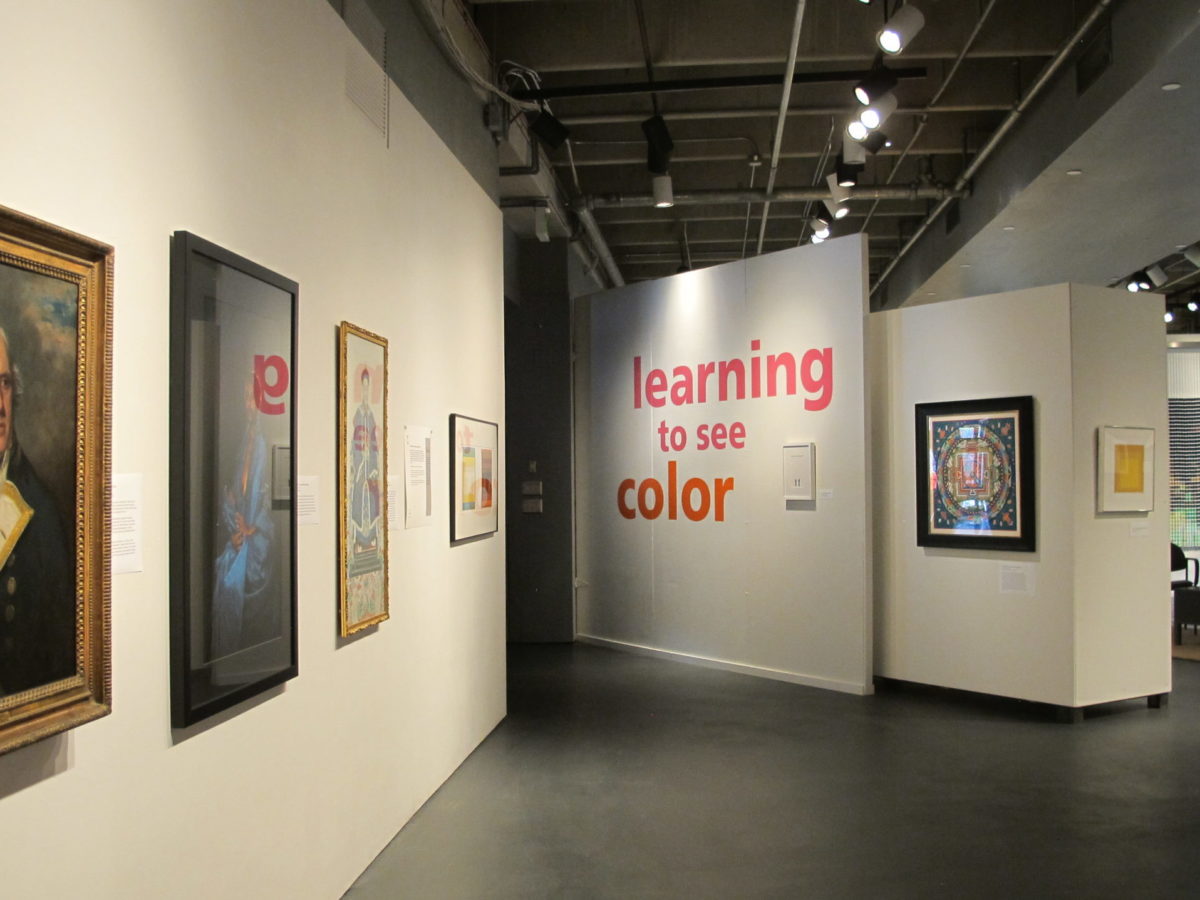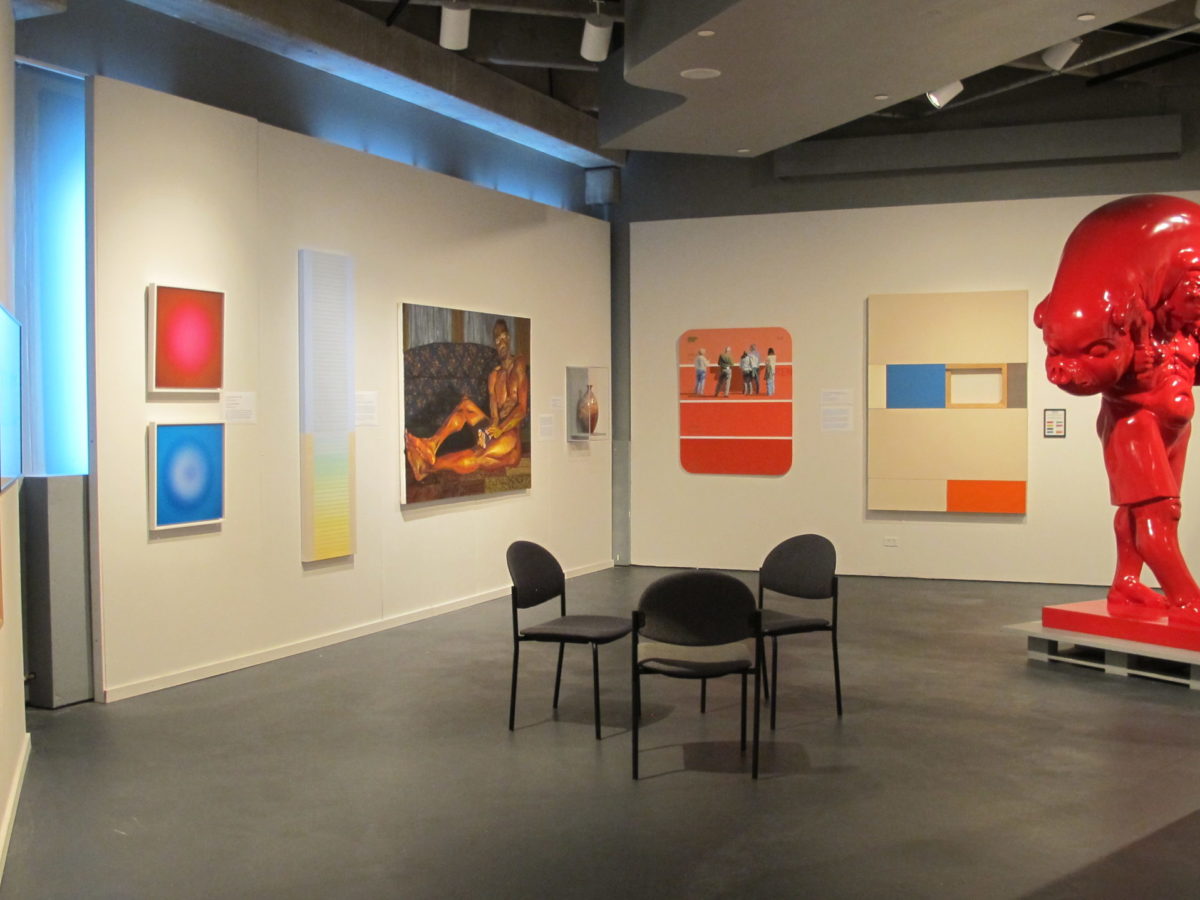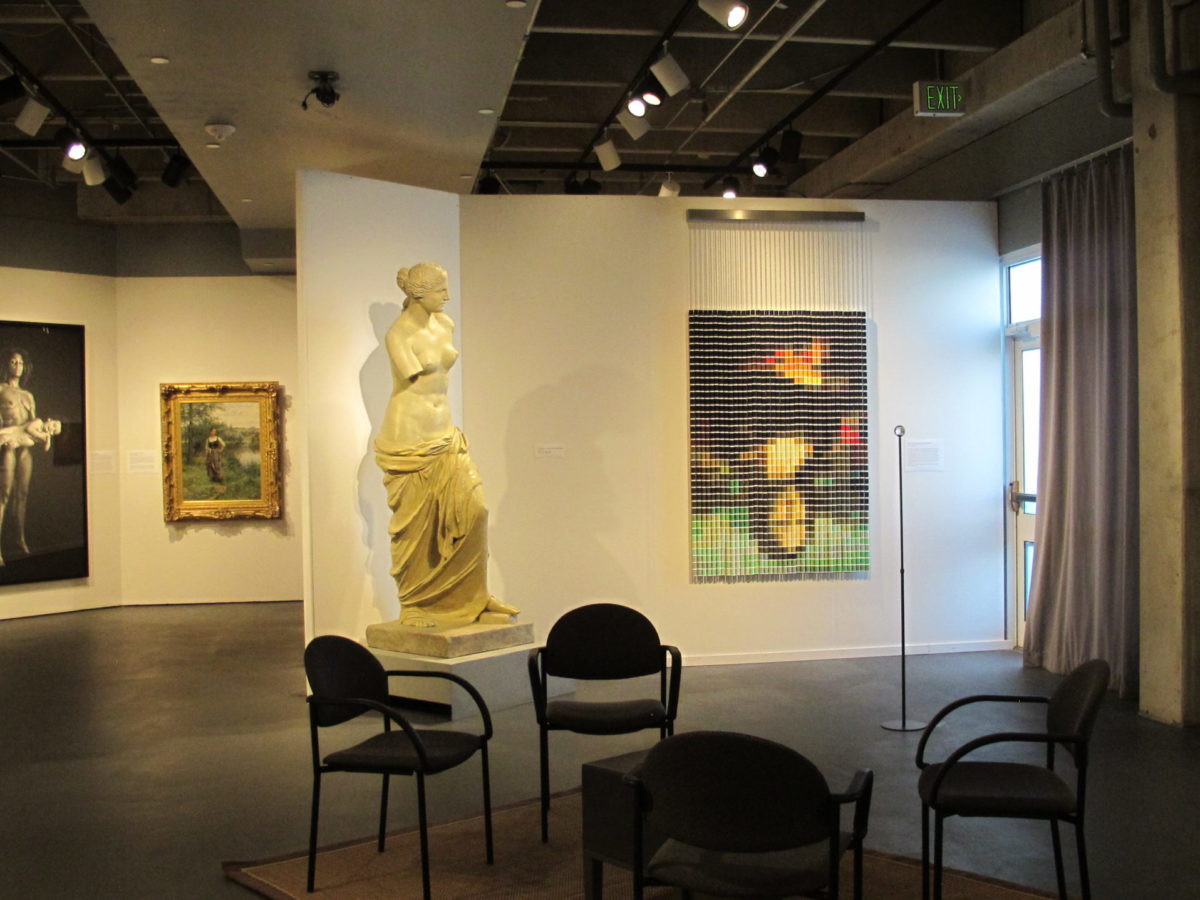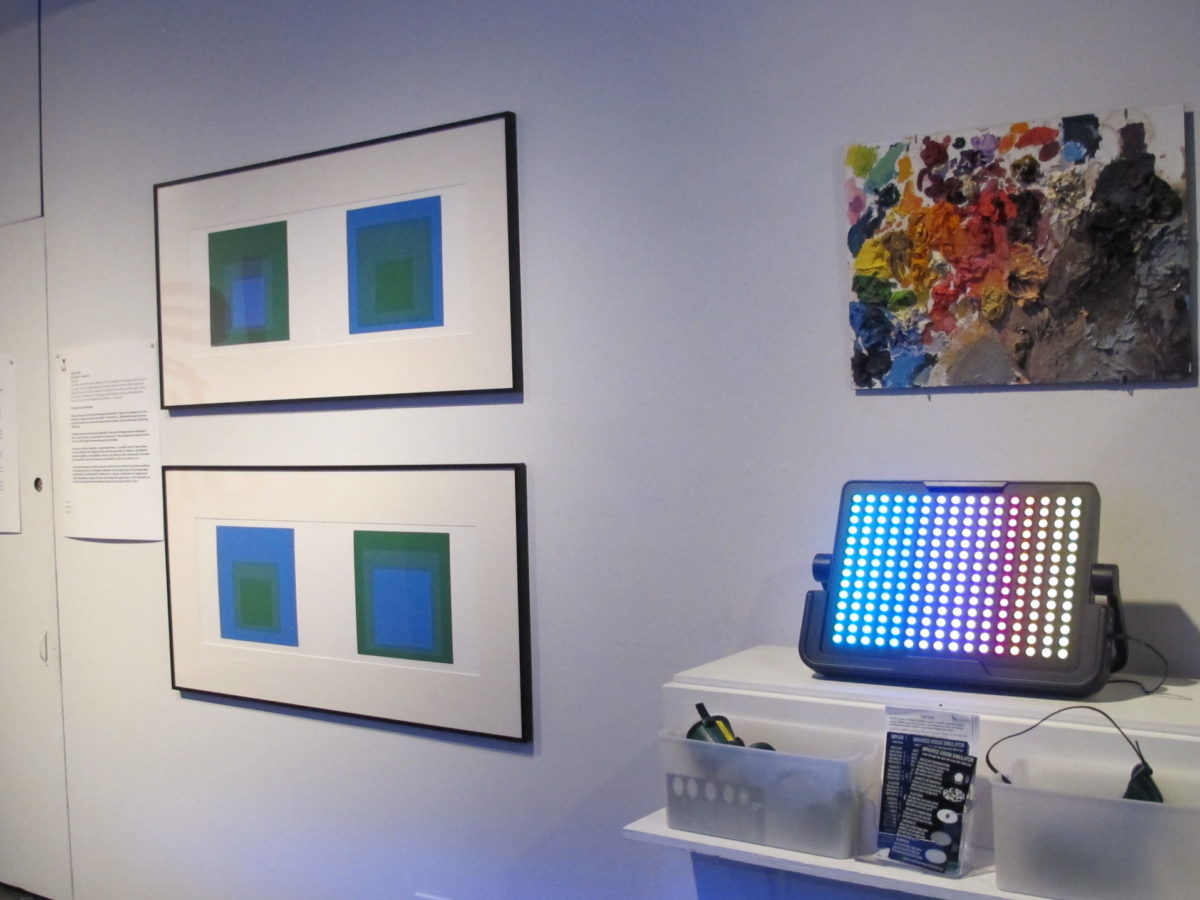Learning to See Color
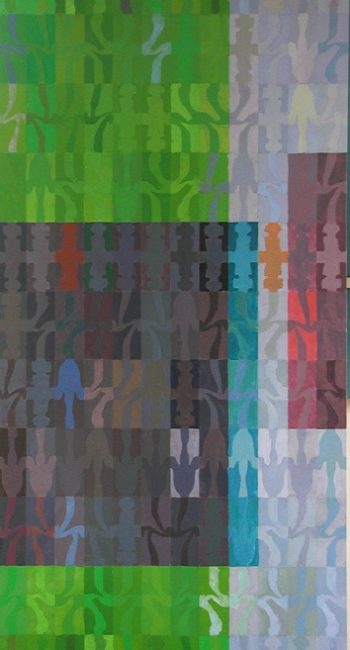
The meanings of color shift according to cultural context, time and location. Its changeable nature has both frustrated and inspired artists for centuries, and visual art records countless experiments in visual experience. The variability in human vision, including both dramatic phenomena like color-blindness and other more subtle differences in color perception, further complicates and destabilizes color.
All of this is reflected to some degree in color vocabulary, which varies—sometimes dramatically—from one language to another. Color in human culture also shifts constantly with the invention of new pigments and new color technologies (we’re in the midst of color revolution, as RGB takes over from many other systems). If we can’t even describe color using a shared vocabulary, how can we get a handle on shared meaning?
Five questions about color:
Is color the same everywhere and for everyone?
Color varies over time, across geography and cultural context.
Does color “exist” or is it just a by-product of perception?
Color exists as a measurable physical phenomenon and as perception; there is an imperfect correspondence between the two.
How do artists use color to create space?
Color creates the sense of physical space, and also emotional spaces or states of mind.
How have artists attempted to control color?
Just as there are many musical scales and modes, artists use various systems—some traditional, some are based on available materials, and some on personal experience.
What does color “mean”?
Color has cultural meanings, personal meanings, political meanings. In the end, it’s the variability of these meanings that may be most significant. The ability to alter how color signals meaning is a key tool in the hands of the artist.
Artists:
Kate Petley
Ashley Williams
Madeline Bragg
Monroe Hodder
Tim Hahn
Helen Motherwell Frankenthaler
Claude Rowbotham
Harvey Otis Young
Bayard Hollins
Sushe Felix
Josef Albers
John Marin
Kehinde Wiley
Thangde Gatsal Studio
John Hoppner
Renluka Maharaj
Chen Wenling
Enrique Chagoya
Andy Warhol
Max Estenger
Shawn Huckins
Mario Reis
Ridgway Knight
Cassandra Lillard
Robert Smith
Jordan Casteel
Bill Armstrong
Milton Avery
Sandy Skoglund
Thomas Monro
Robert Rauschenberg
Nina Dietzel
Marie Laurencin
Rachel Lachowicz
Renée Cox
Jenny Morgan
Clyfford Still
J. Henry Fair
Arthur Garfield Dove
Jim Green
Sam Tchakalian
Charles Partridge Adams
Andrew Clark
Collin Parson
Devorah Sperber
Albert Bierstadt
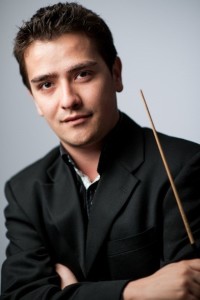
Learning to Hear Colors
Newman Center Presents Colorado Symphony Orchestra
Thursday evening, February 25, 2016
Conducted by Andres Lopera, Assitant Conductor, Colorado Symphony Orchestra
Digital light projections created by Bailey Dunning and Travis Powell
Red: Courage & sacrifice, Love, Happiness and Celebration, War and Rage
Holst Mars from The Planets
Tchaikovsky Romeo and Juliet – excerpt
Yellow: Sunlight and Gold, Jealousy, Caution
Mendelssohn Fingal’s Cave
Tango Jealousy
Copland Rodeo
Copland Appalachian Spring (Excerpts)
Blue: Sympathy, Harmony, Faithfulness, Friendship and Confidence, Melancholy
Respighi Fountains of Rome (If instrumentations allow)
Shostakovich 5 symphony 3rd movement (melancholy)
Benjamin Britten Four Sea Interludes
Sibelius Finlandia( from the 20 works)
Beethoven Symphony no 6 ( storm movement)
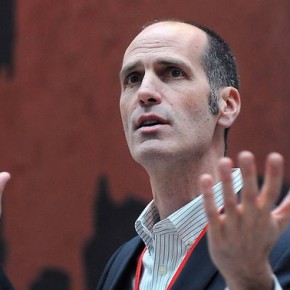
LEARNING TO SEE COLOR SYMPOSIUM
AT THE VICKI MYHREN GALLERY, UNIVERSITY OF DENVER
CO-PRESENTED BY THE UNIVERSITY OF DENVER AND THE CLYFFORD STILL MUSEUM, DENVER
Friday morning, February 26, 2016
Dean Sobel, Director of Clyfford Still Museum
Dean Sobel will be the moderator for the symposium. Sobel was appointed Director of the Clyfford Still Museum in February of 2005. A specialist in 20th – century art, Sobel spearheaded the effort to create a permanent home for the Clyfford Still and Patricia Still estates, which encompass approximately 2,400 works of art by Still that were donated to the City of Denver in 2004 and 2005. Sobel led the process of selecting Brad Cloepfil and Allied Works Architecture as the architect for the new museum and established the vision and inaugural exhibition and public program for the new institution. Under Sobel’s leadership, the Clyfford Still Museum has raised approximately $32 million to date in support of its new building, operations, and endowment.
Christie Del Ciotto, ASID
Christie Lyn Del Ciotto, ASID is an Interior Designer and graduate of Penn State University’s Architecture program. Ms. Del Ciotto worked in the field for six years prior to joining The Sherwin-Williams Company in 2003 to oversee the design and development of a “first” for the paint industry- The Color Studio. In her current role as a Marketing Manager at Sherwin-Williams, Ms. Del Ciotto is responsible for building brand awareness and increasing market share among her target market. In 2005, Ms. Del Ciotto successfully passed the NCIDQ (National Council for Interior Design Qualification) exam. She has served on the Board of Directors for the Pennsylvania East Chapter of ASID (American Society of Interior Designers) as well as the Philadelphia Chapter of IFDA (International Furnishings and Design Association). Ms. Del Ciotto has received numerous industry awards, including the highly coveted Presidential Citation Award from ASID.
Andres Lopera, Assistant Conductor
Andres Lopera, a leading Latin American orchestral artist in the United States, is an Assistant Conductor at the Colorado Symphony Orchestra. In 2012, Andres was appointed music director of the Metropolitan Youth Symphony in Portland, OR, where he oversaw more than 460 students. In recognition of his contributions to Portland, Andres received the Portland Monthly Award, Rising Star Award, and the Hispanic Metropolitan Chamber Bravo Award. In conjunction with the exhibit Learning to See Color, Lopera will conduct a symphony (February 25, 7:30PM, Newman Center) that explores the musical aspects of color. Lopera leads you through a program demonstrating that art created to be experienced through one sense, such as music, can actually lead to perceptions and feelings experienced through other senses – colors can be heard.
Devorah Sperber, Artist
Devorah Sperber is an artist featured in the current exhibit, Learning to See Color. Sperber is a New York-based artist whose sculptures, composed of thousands of ordinary objects, negotiate a terrain between low and high tech. Her labor-intensive works explore repetition and the effects of digital technology on perception, scale, and subjective reality. Interested in the links between art, science, and technology through the ages she deconstructs familiar images to address the way the brain processes visual information versus the way we think we see. – courtesy of the Brooklyn Museum’s 2007 exhibit “The Eye of the Artist: The Work of Devorah Sperber”
Jeffrey Keith, Artist and Color Expert
Jeffrey Keith is a local artist, color expert, teacher, and co-curator of the exhibit Learning to See Color. He has taught painting, drawing and color theory at the University of Denver School of Art and Art History for over 20 years, where he was named the 2001 Adjunct Faculty Member of the Year. Though certainly influenced by the paint-pushers of the New York Abstract Expressionist school, Keith was more strongly drawn to the figurative work of California painters like Richard Diebenkorn and the Bay Area “Bad Painters” such as David Park, Joan Brown, and Bruce McGaw, whom he studied under at the San Francisco Art Institute.

